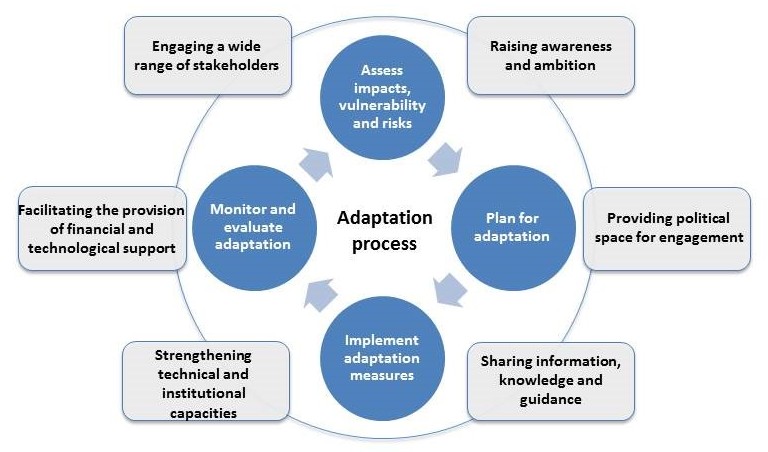What does climate adaptation and resilience look like?
This article by UN Climate Change highlights the importance of climate adaptation ahead of #COP25
T
he world is already experiencing changes in average temperature, shifts in the seasons and an increasing frequency of extreme weather events and other climate change impacts and slow onset events. The faster the climate changes, and the longer adaptation efforts are put off, the more difficult and expensive it could be.
Adaptation refers to adjustments in ecological, social, or economic systems in response to actual or expected climatic stimuli and their effects or impacts. It refers to changes in processes, practices, and structures to moderate potential damages or to benefit from opportunities associated with climate change. In simple terms, countries and communities need to develop adaptation solution and implement action to respond to the impacts of climate change that are already happening, as well as prepare for future impacts.
Different shapes and sizes
Adaptation solutions take many shapes and forms, depending on the unique context of a community, business, organization, country or region. There is no ‘one-size-fits-all-solution’—adaptation can range from building flood defences, setting up early warning systems for cyclones and switching to drought-resistant crops, to redesigning communication systems, business operations and government policies. Many nations and communities are already taking steps to build resilient societies and economies, but considerably greater action and ambition will be needed to cost-effectively manage the risks, both now and in the future.
Successful adaptation not only depends on governments but also on the active and sustained engagement of stakeholders including national, regional, multilateral and international organizations, the public and private sectors, civil society and other relevant stakeholders, as well as effective management of knowledge. Adaptation to the impacts of climate change may be undertaken across various regions, and sectors, and at various levels.
Parties to the UNFCCC and its Paris Agreement recognize that adaptation is a global challenge faced by all with local, subnational, national, regional and international dimensions. It is a key component of the long-term global response to climate change to protect people, livelihoods and ecosystems. Parties acknowledge that adaptation action should follow a country-driven, gender-responsive, participatory and fully transparent approach, considering vulnerable groups, communities and ecosystems, and should be based on and guided by the best available science and, as appropriate, traditional knowledge, knowledge of indigenous peoples and local knowledge systems, with a view to integrating adaptation into relevant socioeconomic and environmental policies and actions.
How do parties address adaptation?

Illustration shows adaptation cycle under the UN climate change regime
The ideas presented in this article aim to inspire adaptation action – they are the views of the author and do not necessarily reflect those of the Global Center on Adaptation.